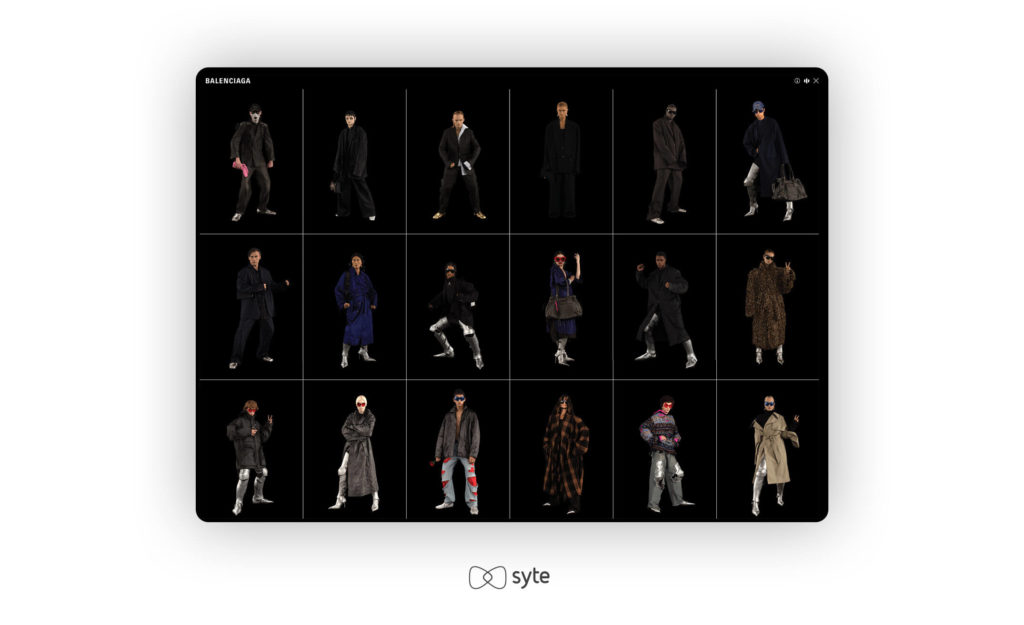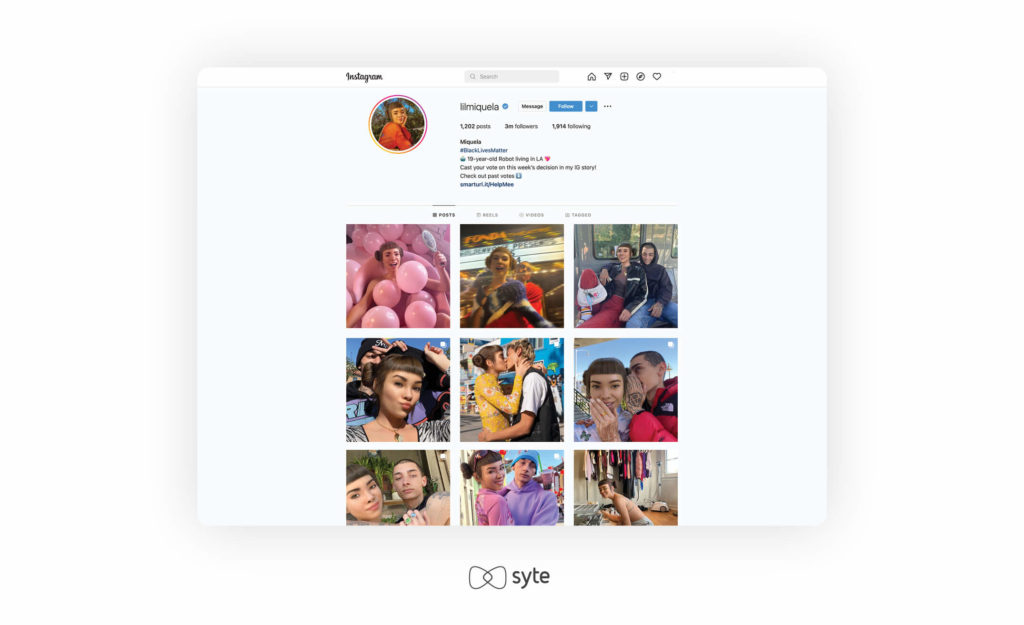Nike recently made headline rounds when the brand acquired RTFKT, a non-fungible token (NFT) studio. RTFKT has collaborated with a variety of artists to sell real sneakers alongside virtual ones, earning as much as $3.1 million in under six minutes. The move is part of Nike’s recent foray into the metaverse. This is not only accelerating the brand’s digital transformation, but serving athletes and creators at the intersection of sport, creativity, gaming, and culture.
As consumers continue to navigate connected digital worlds, eCommerce’s move to the metaverse will become inevitable. Although still in its infancy, CX use cases in the metaverse are already being put to the test by brands looking to differentiate themselves from the competition. NFTs are all the rage at the moment and enable shoppers to own a unique digital asset that cannot be duplicated or found anywhere else. According to Morgan Stanley, the demand for digital fashion and luxury goods will grow to $50 billion in revenues by 2030.
The metaverse is an emerging space and a product of several technologies, including cryptocurrency, blockchain, augmented reality (AR), and virtual reality (VR). In the eCommerce sphere, the metaverse can be a place where brands recreate physical products and in-store experiences online without the limitations of the offline world.
Gucci, Burberry, Ralph Lauren, and Vans are already seeing potential in the metaverse. The aspiration shared by many of these brands is to create seamless and immersive shopping experiences beyond the analog that extend to product discovery, community-building, and shopper loyalty. The metaverse is also seen as another touchpoint for building and sustaining customer relationships that transcend geography and logistics.
The metaverse is a future with unlimited potential, yet eCommerce has barely dented its surface. There are many ways to use mixed reality and hybrid worlds, and the following examples are some places to get started.
1. Create One-of-a-Kind Shopping Experiences
Anything is possible in the digital world. The metaverse, free of tangible restrictions, offers even more options for creating innovative shopping experiences. This translates into hyper-personalization and capturing in-depth behavioral data to create bespoke experiences.
Vans has already explored experiential retail with locations such as House of Vans and the Vans Off The Wall Skatepark. Now, it is empowering creative expression virtually through Vans World. The online interactive experience brings together skateboarding and fashion by enabling users to customize their own virtual shoe styles and skateboards. Users can also perform skateboard tricks in 3D and interact with other skate enthusiasts on the platform.
Meanwhile, Balenciaga launched “Afterworld: The Age of Tomorrow,” a video game showcasing the label’s Fall 2021 collection. Players must traverse five levels, beginning with a virtual Balenciaga store, with garments that transform into useful pieces worn in an apocalyptic future. The clothes are suited for repeat use until completely worn out, which is in line with designer Demna Gvasalia’s advocacy for sustainability.

2. Build Loyalty in a Virtual Community
Even in a virtual world, customers still crave connection because it is a need deeply ingrained in our collective psyche. Brands can craft shopping spaces in the metaverse that encourage interaction between customers, even if they’re worlds apart.
Gucci is harnessing the power of the metaverse through a limited release of selected items, as well as a virtual installation. Users can shop for and explore these spaces while also interacting with other shoppers. Through the metaverse, luxury brands like Gucci are becoming increasingly accessible to millions of shoppers while keeping their identity intact.
Louis Vuitton is creating a highly connected world in the metaverse. “Louis the Game,” available on Apple and Android devices, is about more than just showcasing the fashion house’s heritage, it is also a platform incorporating collectible NFTs.
3. Develop Different Forms of Accessibility
To instill a sense of exclusivity and scarcity, opt for creating private spaces for top-tier customers with exclusive access to limited edition NFTs. No matter your objective and the level of accessibility you seek, you can use the metaverse to reach target customers and new markets, sell unique digital goods, and share your brand story in a novel way.
When it comes to Balenciaga and Ralph Lauren, customers can have a taste of luxury for a fraction of the brand’s regular prices, albeit digitally. Fortnite skins from Balenciaga cost 1,000 V-Bucks, or about $8. Digital users can acquire Ralph Lauren winter apparel for as low as $3.
Some brands are going as far as selling items that surpass the value of their physical collections, signaling even greater exclusivity. The Gucci Dionysus bag sold for 4,100 dollars’ worth of Roblox currency, a much higher price tag than what goes for a physical bag. Meanwhile, Dolce & Gabbana has auctioned nine-piece NFTs from its Collezione Genesi for $5.7 million.
4. Track Product History for Transparency
The technologies behind the metaverse also offer solutions to prevent fraud and detect counterfeit products. Through NFTs and blockchain-enabled digital passports, you can verify the authenticity of physical items.
Blockchain technology logs information such as the manufacturing process and ownership, ensuring users can track products with 100% accuracy. No two NFTs can ever be alike, even if you own the same products. This is a gamechanger in the second-hand market because pre-loved goods can be easily authenticated.
5. Bridge the Online-Offline Gap With Omnichannel Experiences
The metaverse does not have to be exclusively virtual. If you’d like to cover all bases, you can have a physical counterpart to a digital item or vice versa.
Brands have already started to explore how to bridge the online-offline gap. Take for example Nike with Nikeland. Users can express themselves through fashion in their virtual showroom and don the pieces digitally, even outside Nikeland. Through games, players collect medals and ribbons, which they can then use to purchase physical Nike products.
Dolce & Gabbana’s Collezione Genesi also has select NFTs with physical counterparts. The pieces include jackets and dresses specifically created for the collection. The purchases also come with up to 2-year admissions to Dolce & Gabbana fashion shows.
6. Discover Products with Out-of-the-Box Thinking
Among the possibilities offered by the metaverse is even more effective product discovery. Brands can expand to new markets or tie NFTs to a specific digital asset in the metaverse. Inspiration can strike customers in places beyond your website, marketplace, social media, and gaming.
Lil Miquela, the virtual influencer created by a Los Angeles-based startup, has been around since 2016. Since then, she has gained a 3.1 million following on Instagram and has worked with countless brands, including Calvin Klein and Samsung. Lil Miquela also boasts a 2.7% engagement rate, which is comparable to other celebrities such as Selena Gomez. Her feed shows her leading a life just like other influencers, although she only exists in the virtual world.

Fashion occasionally fuses with gaming, as is the case of Burberry and the video game “Honor of Kings.” Yao, the protagonist, is seen in outfits that are undeniably Burberry. Eager fans can purchase the clothes either online or through Burberry stores.
Alibaba is also banking on the metaverse. The marketplace recently launched the Double 11 “Metaverse Art Exhibition” which features limited collections in the form of NFTs. Shoppers can discover the selected pieces from different brands including Burberry and Kiehl’s. Customers who buy limited Double 11 physical items also get complimentary NFTs.
7. Ramp Up the R&D Potential
The metaverse will be priceless in terms of market research and product development. Brands can activate customers by involving them in the product development process throughout all stages and use NFTs as rewards for their efforts. NFTs can also provide early access to launches and be used in credit-sharing schemes.
Digital fashion house The Fabricant is already creating clothing meant to be worn in the metaverse. It is rallying people to participate in The Fabricant Studio, where everybody can create their own digital fashion NFT. The brand believes that digital clothing will be increasingly made through a collaborative process, democratizing fashion creation in the process.
In Summary
The metaverse certainly offers many opportunities for delivering unique shopping journeys and product discovery experiences.
As you begin to think about the best way to approach the metaverse, remember to think big with your customers at the core. At the end of the day, the successful path to the metaverse is one where your customers’ expectations, wants, and needs are perpetually fulfilled.